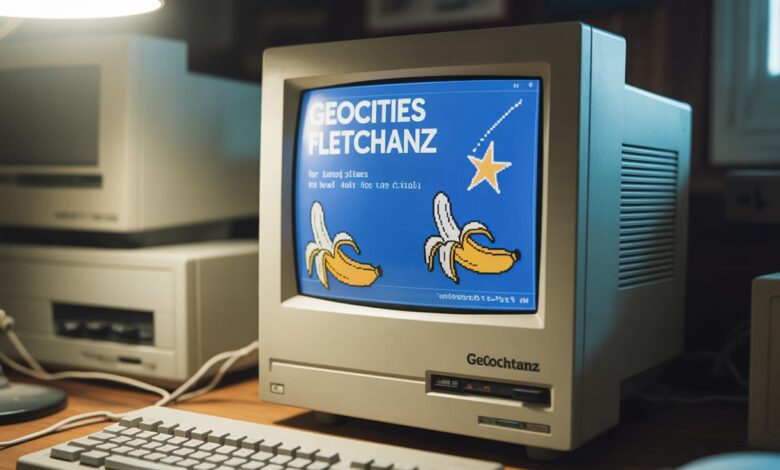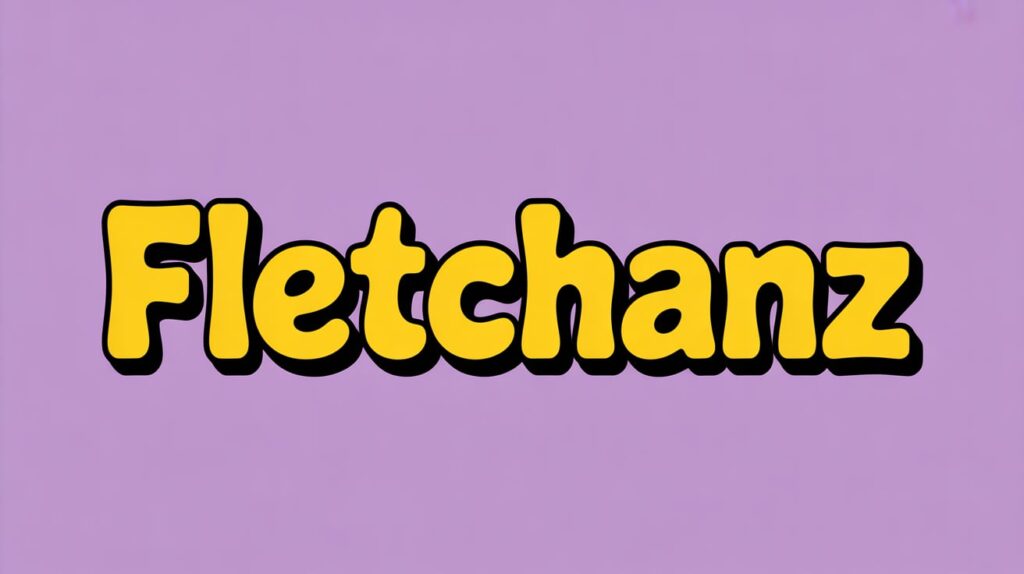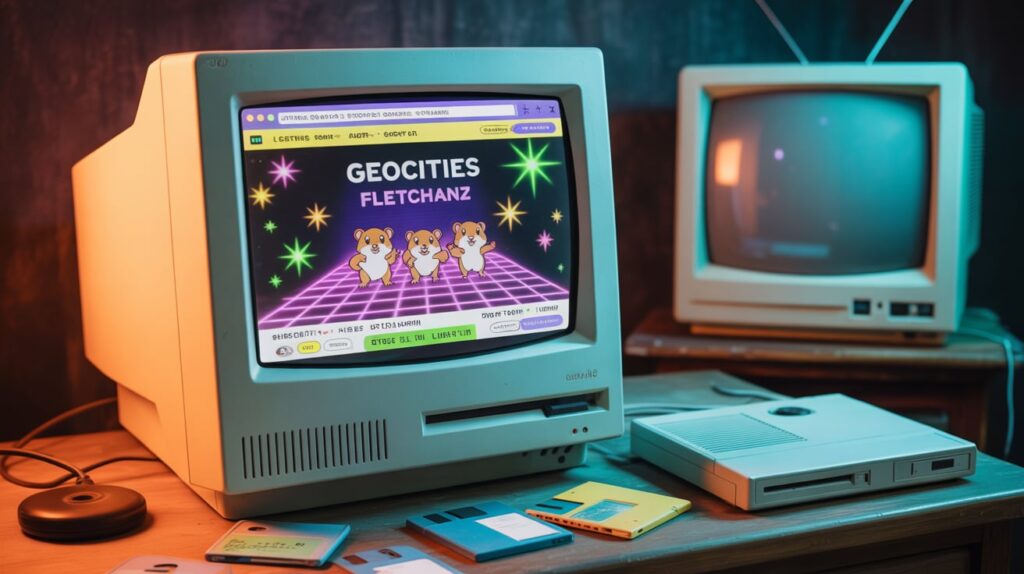What Was Geocities Fletchanz?

If you used the internet in the late 1990s or early 2000s, you might remember Geocities — a place where anyone could make their own website for free. One of the most interesting “neighborhoods” on Geocities was called Geocities Fletchanz. It wasn’t a company or a brand. It was more like a lively online street filled with colorful pages, flashing text, and wild creativity.
People built their pages from scratch using simple HTML. There were no templates or drag-and-drop tools. Everything was homemade. Some pages were about favorite TV shows or hobbies. Others shared personal stories, photo albums, or even small experiments in coding. The fun part was that you never knew what you’d find next.
A Place for Everyone to Create
What made Geocities Fletchanz special was how open it was. You didn’t need to be a designer or a programmer. You could start a page, add bright colors, moving GIFs, or blinking words, and it was yours. Visitors could leave comments in your guestbook or click a webring link to visit another page in the same neighborhood. It felt like walking through a friendly digital town where everyone had a story to tell.
This freedom helped people learn, too. Many users taught themselves how to code just by experimenting. They tried new things, broke their pages, fixed them again, and kept going. It was messy, but that was part of the charm. Geocities Fletchanz made learning fun because it turned every mistake into something creative.
The Look and Feel of Fletchanz

When you visited Geocities Fletchanz, you could tell right away that it was unlike today’s websites. The backgrounds were bright and sometimes clashing. There were spinning logos, scrolling banners, and music that started playing the moment you arrived. It might seem strange now, but back then, it was exciting.
That look became part of early internet culture. It showed that the web was not just for businesses or experts. It was a playground for everyone. Each page in Fletchanz had its own personality, whether it was about a fan club, a game guide, or someone’s pet cat. You could feel the person behind the screen — and that made it special.
Why Geocities Fletchanz Still Matters
Even though Geocities shut down in 2009, the spirit of Geocities Fletchanz is still alive. Some people have saved old pages through the Wayback Machine and digital archives. Others have brought back the same DIY energy through projects like “the indie web.” These modern creators build their own simple websites because they miss the freedom that Fletchanz offered.
Today, most social media platforms give us clean designs and ready-made layouts. But that also means we lose the chance to make something truly personal. Geocities Fletchanz reminds us of a time when the internet was messy, creative, and full of surprises. It taught people that the web could be whatever they wanted it to be.
The Fall of Geocities and the Loss of Fletchanz
By the late 2000s, the internet had started to change. New platforms like Facebook, YouTube, and Blogger became popular. They made it easy to post content without knowing any code. People no longer needed to build their own websites. Slowly, Geocities Fletchanz and other neighborhoods became quiet.
In 2009, Yahoo decided to shut down Geocities completely. When that happened, thousands of personal pages disappeared overnight. Many users didn’t have time to save their work. It felt like an entire world of memories and creativity had vanished. Imagine spending years making something and then losing it with one click — that’s how many people felt when Geocities closed.
But not everything was lost. Some internet lovers rushed to save what they could. Thanks to projects like the Wayback Machine and Internet Archive, parts of Geocities Fletchanz are still online today. They stand like tiny digital museums that show how the early web once looked and felt.
The Lasting Influence of Geocities Fletchanz
Even though Geocities is gone, its spirit didn’t die. In fact, it helped shape what the internet became. The idea that anyone could make a website, share their thoughts, and connect with others started with places like Geocities Fletchanz.
Many of today’s creative online spaces — like personal blogs, fan art pages, and small handmade sites — carry the same energy. You can still see the bright colors and pixel art styles that Fletchanz made famous. The “retro web” trend, which uses old-school designs and fun graphics, is another way people honor that time.
Some modern creators are even rebuilding Fletchanz-style pages to remind everyone that the internet can still be playful. These projects celebrate the past but also push back against how plain and controlled the modern web can feel. They bring back that feeling of freedom — when making a mistake on your website wasn’t scary, it was part of learning.
Lessons from Geocities Fletchanz

Geocities Fletchanz teaches us something important about creativity and ownership. It showed that you don’t need fancy tools or a big company behind you to share your ideas. You just need curiosity and a bit of courage to try.
It also reminds us that the web works best when people build it, not just scroll through it. Back then, users were creators first. They shaped their own online spaces and helped each other learn. Today, that same spirit lives on in the indie web and small online communities where people still design personal pages for fun.
Maybe that’s the biggest lesson of all — that the internet doesn’t have to be perfect to be meaningful. A messy, colorful, and homemade website can tell more about a person than a polished social media profile ever could.
Looking Back and Moving Forward
In 2025, people still talk about Geocities Fletchanz because it represents something rare — an internet built by real people, for real people. It reminds us that behind every screen, there’s someone creative, curious, and eager to share.
The next time you visit a modern website or post something online, think about how different things were back then. Every glittery banner, every funny GIF, and every simple HTML page was a piece of art. It was proof that anyone could be a creator.
Geocities Fletchanz may belong to the past, but its heart is still part of the web today. Its mix of creativity, community, and courage continues to inspire a new generation to make the internet their own — one small page at a time.



